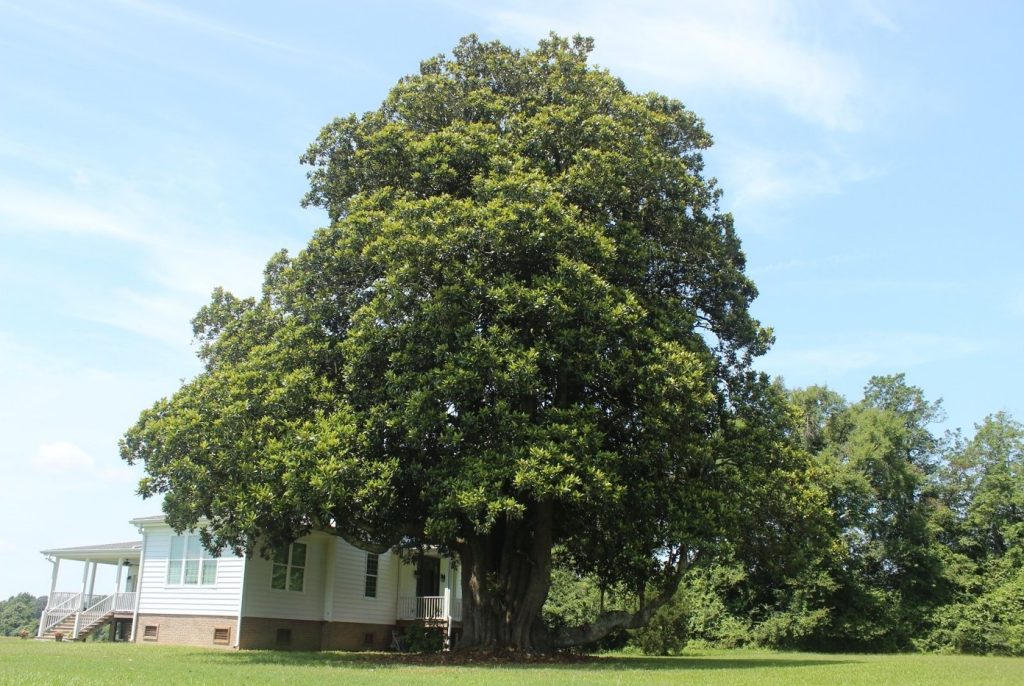
The formula for measuring a champion tree is deceptively simple: add the trunk circumference (in inches) to a tree’s height (in feet) and one-quarter of the tree’s spread (in feet).
Many of the tools required for the job are probably in a typical basement (100-foot tape measure, plumb bob), and many of the rest (compass, GPS receiver, rangefinder) are easy to download onto a cellphone.
This is as it should be, said Eric Wiseman, an associate professor in VT’s College of Natural Resources and Environment who has coordinated the Virginia Big Tree Program since 2013. The program celebrated its 50th anniversary this year with a move to the top spot in the entire country with 102 registered champion and co-champion trees, according to the 2020 National Register of Champion Trees released by American Forests.
“The central purpose of this program is to promote the conservation and preservation of these heritage trees and to raise the general public’s knowledge and literacy about forests,” said Wiseman, a faculty member in the Department of Forest Resources and Environmental Conservation who has led the program since 2013. “We want our research to be rigorous enough to be taken seriously, but we also want the process to be simple enough so that the general public can participate in the work.”
Wiseman said that while his contributions to the state’s big tree database, from combing through the national database to find eligible species to promoting contending nominees, has taken place behind the scenes, the hard work of finding and documenting big trees is accomplished by the outdoor enthusiasts and professionals who share their discoveries with him.
“I may be the point person who holds this project together,” he noted, “but our success wouldn’t be possible without all of the volunteers who search for trees as a hobby or as part of their profession, and the people who work in arboriculture or land management roles for state agencies or federal parks.”
American Forests’ efforts to document large trees dates back to 1940, but some states started tracking trees long before then. The project of measuring the maximum size and geographic distribution of trees was initially motivated by lumber industry considerations.
“A lot of current interest is in the tree’s growth rate and how much leaf area it has,” Wiseman noted. “These are crucial metrics for ecosystem services in urban area because leaf area is important in filtering air pollution and intercepting storm water. And we’re increasingly interested in how much carbon can be stored in trees, which makes the scaffolding of branches and the crown spread an important consideration.”
While Virginia’s Big Tree Program allows people who are passionate about trees to contribute to a database of information, Wiseman hopes that the program can be a resource for bringing environmental education to young students.
“Looking for big trees involves geography, geometry, plant taxonomy and biology, all integrated towards a specific challenge,” he said. “It’s a great way to get students to synthesize a lot of different cognitive skills while spending time in the outdoors.”
Individuals can access the Virginia Big Tree database online to find champion trees in their neighborhoods and favorite recreation areas. American Forests offers a free downloadable handbook on how to measure big trees.
— Written by David Fleming


